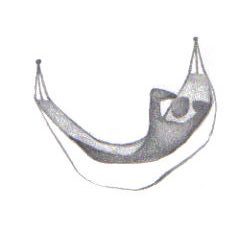

Kirk Lindstrom's: Articles - Favorite Charts - Newsletter - Blog
==> Kirk Lindstrom's Investment Letter: Subscribe Now! <==
 |

|
|
Kirk Lindstrom's: Articles - Favorite Charts - Newsletter - Blog ==> Kirk Lindstrom's Investment Letter: Subscribe Now! <== |
|
|
|
March 14, 2016:
I posted the first version of this article long ago
in my "Personal Finance and Investing" topic at the long defunct
Suite101.com. Using Asset Allocation to Make Money in a Flat Market By Kirk Lindstrom, updated March 14, 2016 (Happy Pi Day!) I am often asked "How do you use allocation and individual stock volatility to beat the market without using market timing?" (See My Portfolio Returns by Year) This is a great question! My technique is to rebalance often rather than once a year. Using a computer I have my personal and newsletter portfolios update daily. When they change by a given percentage, I can reallocate to bring them back to my target. This has me buying stocks when they are low and selling them when they are high. The easy way to explain it is consider an example in a flat market where you are 50% in equities and 50% in bonds. Assume neither pay interest and we are just looking at fluctuations in capital. Lets start with $100,000 split $50,000 in bonds and $50,000 in the total stock market. Lets say the market starts with VTSMX at $10 goes down to $9 in Q1, goes back to $10 in Q2, continues higher to $11 in Q3 and finishes Q4 back at $10. Note: VTSMX is Vanguard's Total Stock Market Index Fund used here for the hypothetical example. How would you make money following my technique? Well, after splitting your investment 50:50 as shown in Table 1, the market goes down 10%. So now you have a total of $95,000 since only half was in the market.
|
|
||||
| Next you rebalance your assets to get back to 50:50 as shown in Table 1
for April 1 where you end up with $47,500 in both VTSMX (Equities) and
Bonds. You repeat this rebalancing every time VTSMX moves by $1.00 as shown in Table 1.
How about that! Your portfolio grew $506, or 0.51%, while the market completed a full cycle and ended back where it started! The skeptics will ask "what happens if the market goes up before it does the down cycle?" Lets see:
Well, it looks like you make $50 more for an additional 0.05% You will make even more when you consider that your bonds are earning income. I like Vanguard's Total Bond index fund (VBMFX) for its great diversity but Bob Brinker's followers could probably do just as well with Vanguard's GNMA fund (VFIIX). At times when we were getting less than 2% in money market funds, we should not dismiss this potential to gain extra yield just from market volatility. For a $1,000,000 portfolio, an extra 0.5% translates to $5,000! Compound this over 40 years and this can really add up. Kirk, You have done even better. How do you get your better returns? The easy answer is I increase the volatility of my portfolio so there are more and larger opportunities to rebalance. note: REIT stands for Real Estate Investment Trust. What I do is try to buy a handful of stocks I like very much for the long term but that are highly cyclical so they have very high volatility. One I like is Lam Research (ticker LRCX) which usually moves much more than the overall market. Here is a LRCX chart showing it has been quite volatile as well as an exceptional investment since I added it to my newsletter explore portfolio in September 1998. I fondly call it my "ATM." In my newsletter,
every month I update good price points to add to positions and price
points to take profits using a mixture of TA, FA and "seat of the pants
luck (or skill)." For
me, LRCX has acted like an ATM cash machine and I hope this
continues. With ten or twenty stocks in my portfolio, it is easy
to find stocks surging to take profits on when the market is going up,
then when it corrects, I look for what is down to buy back or simply buy
more shares of. You
should also notice that I make no claims to call market tops or bottoms
as I believe this is impossible to do over and over without making
mistakes trying to get back in or out too soon. Given the stock market
goes up in the long term, you can usually increase returns by taking
profits when everyone is bullish and the markets are making new highs
then putting those profits back into the market when it corrects but
that is really "active rebalancing" not market timing.
Market timing looks great when you can ignore the mistakes. People can make electricity from the rise and fall of ocean waves. I got the idea of using the markets natural volatility from this and my example above shows how it works to make money even in a "flat market." For my example, I used a $1 change for a $10 share price for VTSMX as the level to reallocate but a smaller number will allow more frequent re-allocations and potentially more profit generation. Feel free to email me if you have further questions about this or my newsletter where I cover it in more detail. YOU DO NOT NEED TO PAY A PRO TO MANAGE YOUR MONEY! Most people don't have a plan that they stick with so they chase the latest hot trend which often means they buy at the top. Then they get discouraged and sell near the bottom. To make money, you need to find a good plan and stick to it. The simpler the plan and easier to understand, the easier it will be to follow and believe in for the long term. My Core & Explore returns by year. Asset allocation is what any honest investment professional will recommend. "Kirk's Investment Newsletter" contains aggressive and conservative core portfolios made from Vanguard Index funds that you re-balance annually or after a major market move. I also offer low-cost alternative Fidelity index funds as well as ETFs for the core portfolios. My "Explore Portfolio" is optional for five to twenty percent of your portfolio where you try to beat the markets by using more volatile stocks to take profits when they are up and buy back shares when they are down. I am CONVINCED that having an Explore Portfolio helps you look to buy when the markets are down and then look to take profits when they are up. This helps meet or beat the returns of the pros. Feel free to email me if you have further questions about this or my newsletter where I cover it in more detail. | |||||
 |
||

|
KirkLindstrom.com Home of "CORE & Explore®" investing. |
|
Disclaimer: The information contained in
this web site is not intended to constitute
financial advice, and is not a recommendation or
solicitation to buy, sell or hold any security.
This blog is strictly informational and
educational and is not to be construed as any kind
of financial advice, investment advice or legal
advice. Copyright © Kirk Lindstrom.
Note: "CORE & Explore®" was coined by and
is a registered trademark of Charles Schwab &
Co., Inc.
|
||